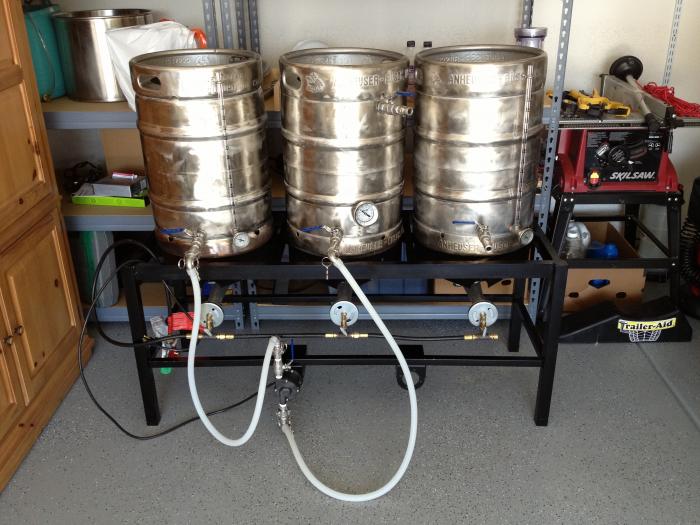SanMarzano
Well-Known Member
The goal was to brew today on my new single tier.....It has been 13 months in the making and I was finally done last week. Brewsteel made the stand and I did all the kettles etc. Instead of brewing I decided to go through a brew day cycle (Glad I did I turned the wrong valve many times LOL), Clean the system, and most importantly calculate my vessel dead space Heat Capacity and Heat Transfer Coefficient in beer tools in hopes I can hit my targets going forward. Here is what I came up with
Are these common to your settings?
Mash Tun
Dead Space - 2/3 Cup
Heat Capacity - 7912.8*J/K
Heat Transfer Coefficient - 12.06*W/m2 K
Boil Kettle
Dead Space - .25 Gallon
Heat Capacity - 7912.8*J/K
Heat Transfer Coefficient - 12.06*W/m2 K
I lost 26 Degrees over 65 min - That includes pumping hot water into an ambient vessel. Should I insulate or is it ok to apply heat to the bottom and recirculate???


Are these common to your settings?
Mash Tun
Dead Space - 2/3 Cup
Heat Capacity - 7912.8*J/K
Heat Transfer Coefficient - 12.06*W/m2 K
Boil Kettle
Dead Space - .25 Gallon
Heat Capacity - 7912.8*J/K
Heat Transfer Coefficient - 12.06*W/m2 K
I lost 26 Degrees over 65 min - That includes pumping hot water into an ambient vessel. Should I insulate or is it ok to apply heat to the bottom and recirculate???




